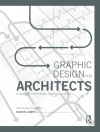This guide integrates theory and practice to offer practical solutions for architects to improve their design management skills.
This unique guide helps architects improve their management skills by addressing the relationship between the management of the design project and the design office. The author demonstrates how a professionally managed project, conceived and delivered within a professionally managed office ensures that client values are translated into construction without loss of creativity.
Design Management for Architects divides into two parts. Part 1: Managing Creative Projects covers the context and infrastructure of projects; looks at client values; describes developing, detailing and realising the design; and shows how to learn from projects. Part 2: Managing Creative Organisations describes the business of architecture; explains how to manage creative people and the design studio – covering communication and knowledge-sharing, information management, financial management and attracting/retaining clients.
This second edition has been extensively rewritten in response to student feedback and to the rapid evolution of design management in architecture. New features include:
- the ‘Why Management?’ question addressed in a design context
- Vignettes to demonstrate the value of design management
- practical advice is incorporated into each chapter under ‘Project to Office Interface’
- more specifics on the design manager role, and the contribution of ICTs (including BIM) to effective design management.
By integrating theory and practice, and offering practical solutions for architects to improve their design management skills, this book provides clear guidance to all designers and (design) managers.
Inhaltsverzeichnis
Preface ix
About the Author xiii
1 Why? 1
Why management? 1
Vignette A – why apply management? 6
Why design management? 7
The role of the design manager 9
Vignette B – why employ a design manager? 12
Taking on the role 14
Scope of the book 16
Part One Managing Creative Projects 19
2 The Business of Projects 21
Understanding projects 21
Quality 24
Time control 25
Cost control 27
Design control 28
Assessing value and risk 30
Procurement and influence 33
Interaction within projects 35
Project frameworks 37
The project-to-office interface 41
3 Establishing the System Architecture 42
Starting as you mean to go on 42
Team assembly 46
Selection criteria 48
Communicating to achieve objectives 52
Managing meetings effectively 56
The project-to-office interface 59
4 Exploring Client Value 60
Understanding the briefing phase 60
Approaches to briefing 62
Understanding the client 65
Establishing value parameters 69
The written brief 74
Reviewing the brief 79
The project-to-office interface 80
5 Creating Design Value 82
Collaborative design 83
Detailing the design 84
Design conversations 87
Design critiques, charettes and reviews 90
Programming and coordinating design work 93
Approvals and compliance 97
Coordination of production information 100
The project-to-office interface 101
6 Realising Design Value 103
Getting involved 104
Working with the contractor’s design manager 107
Programming 109
Interaction during construction 111
Misunderstanding and conflict 114
Requests for information and design changes 116
Closing out projects 118
The project-to-office interface 119
7 Evaluation and Learning 120
Lifelong learning 121
Learning from projects 124
Learning from the product 128
Evidence-based learning 131
Reflection in action 133
Action research and learning 136
The project-to-office interface 138
Part Two Managing Creative Organisations 141
8 The Business of Architecture 143
Architectural practice 144
The professional service firm 145
Clients and the market for services 149
Management of the business 152
Market analysis 162
The office-to-project interface 167
9 Managing Creative People 168
Getting the balance correct 169
Office culture 173
Psychological wellbeing 175
Recruitment and retention 178
Skills development 185
The office-to-project interface 191
10 Managing the Design Studio 192
A creative space 192
The project portfolio 194
The design manager’s role 196
Models of design management 199
The traditional model 203
The sequential model 205
Managing design effort 208
Identifying good habits and eliminating inefficiencies 215
The office-to-project interface 218
11 Communication, Knowledge Sharing and Information Management 219
Communication within the office 219
Communication with other organisations 222
Effective communication strategies 224
Knowledge retention and sharing 226
Information management 230
Preparation of information 233
Implementing and IT strategy 236
The office-to-project interface 238
12 Financial Management 239
Cash flow and profitability 239
Sources of income 243
Fee bidding and negotiation 246
Invoicing and cash flow 248
Controlling expenditure 250
Financial monitoring and evaluation 253
Crisis management 258
The office-to-project interface 259
13 Attracting and Retaining Clients 261
Promoting a brand image 261
The client’s perspective 263
The architect’s perspective 265
Communicating with clients 266
Promotional tools 269
Architects’ signboards 272
Managing marketing activities 274
The office-to-project interface 278
Further Reading 280
Index 284
Über den Autor
About The Author Stephen Emmitt, BA(Hons), Dip. Arch, MA(Prof. Ed.), Ph D, is Professorof Architectural Technology at Loughborough University. He is a registered architect with industrial experience gained in a wide range of architectural practices. He formerly held the Hoffmann Chair of Innovation and Management in Building at the Technical University of Denmark and is currently Visiting Professor in Innovation Sciences at Halmstad University, Sweden. Teaching and research interests cover architectural practice, design management, architectural technology, architectural detailing and innovation in construction. Stephen has taught and facilitated design management workshops in the UK, Europe and Asia.












